Operation Sindoor Hit 11 Pakistani Air Bases in 72 hours
How operation Sindoor hit 11 Pakistani air bases in a daring 72-hour mission, India hit 11 key Pakistani air bases. Here’s how Operation Sindoor rewrote the rules of modern warfare—strike by calculated strike.
1. What pushed India to hit 11 air bases in just 3 days?
Between May 8 and 10, 2025, India launched Operation Sindoor—a mission that sent shockwaves across the region. The spark? A deadly terror attack in Pahalgam. What followed was a series of carefully planned strikes that took out 11 major Pakistani air bases. These weren’t just any targets—they were drone hubs and command centers. India had a message to send: enough is enough. The world watched as a nuclear power took a bold stand without crossing the nuclear line.
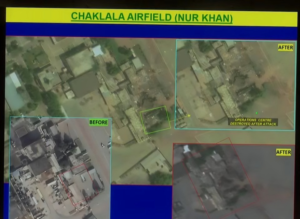
📌 Quick Facts
Operation: Operation Sindoor
Dates: May 8–10, 2025
What: Coordinated Airstrikes
Target: 11 Pakistani Air Bases
Why: Cripple UAV & Nuclear Response Grid
Sources: Indian Express, DD News, The Hindu
2. Why was Nur Khan Air Base a game-changer target?
When Indian fighters struck Nur Khan Air Base—just miles from Islamabad—it wasn’t just about strategy. It was about sending a signal. This base is a heartbeat of Pakistan’s air command and sits near their nuclear control division. Taking it out meant disrupting their top-tier coordination. Satellite images later confirmed: hangars destroyed, radar blacked out. For Pakistan, it wasn’t just a loss of equipment—it was a jolt to their sense of security.
3. What made Rafiqui so important in the bigger picture?
PAF Base Rafiqui was more than a runway—it was a launchpad for Pakistan’s fighter jets. Home to Mirage and JF-17 squadrons, it gave Pakistan dominance over central Punjab. But not after May 8. Indian strikes left the base battered, jets damaged, and the runway unusable. Defense experts called it “a perfect mid-spine hit”—disabling response coordination at a key point in their air grid. India wasn’t just attacking; it was breaking links in a chain.

4. How did Murid’s drone center take a massive hit?
PAF Base Murid was where drone war plans took flight. From here, unmanned missions toward India were controlled. But on May 9, it became a crater. India’s strikes targeted its drone shelters and communication centers. News reports showed charred TB2s and collapsed control rooms. By hitting Murid, India sent a clear message: future drone attacks will be stopped at the source—not on our soil, but on yours.
5. Why strike Sukkur—a seemingly quiet base?
At first glance, Sukkur might not look like a war zone. It’s in Sindh, far from the frontline. But dig deeper, and you find a vital supply route—fuel, transport planes, and logistics feeding southern operations. That’s why it was hit on May 9. The fuel depots exploded. Transport planes grounded. Pakistan suddenly found itself limping, not just bleeding. India was now playing a deep game—cutting off supply chains, not just soldiers.

6. Was Rahim Yar Khan just a side show—or something more?
It looked like a minor base. But Rahim Yar Khan had one secret weapon—drones. It wasn’t flashy, but it was functional, launching silent threats into Indian airspace. India spotted this and acted fast. The May 9 strike wiped out its drone pads and data links. More importantly, it jammed Pakistan’s backdoor options to shift aircraft from other bases. It wasn’t just destruction—it was smart disruption.
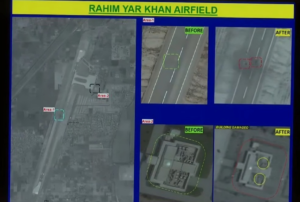
7. What secrets did Pasrur keep—and why was it hit?
Pasrur wasn’t just a base—it was Pakistan’s ear on the Line of Control. Packed with surveillance drones and radar stations, it watched Indian troop movements. But on May 9, that eye was blinded. Hangars collapsed. Radar went offline. Pasrur went silent. By taking it out, India didn’t just score a hit—it rebalanced the intel war. It was now Pakistan’s turn to fly blind.
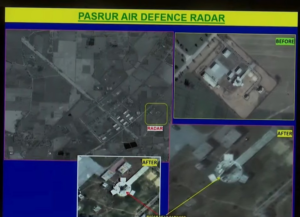
8. Why bother with a small place like Chunian?
On paper, Chunian is just another name in Punjab. But for India’s defense planners, it was a node—a lesser-known but critical drone hub feeding northern and central Pakistan. That’s why, on May 10, it was struck hard. Two UAV shelters and an encrypted relay system went up in smoke. The hit shrunk Pakistan’s drone network even more, proving India wasn’t just playing offense—it was disabling future threats before they were born.
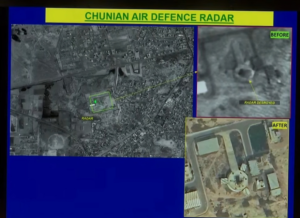
9. Why go after Mushaf—home to Pakistan’s best pilots?
Mushaf Base in Sargodha trains Pakistan’s top pilots. Its elite squadrons, its F-16s—it’s where their best are forged. On May 10, India sent a daring message by hitting it. Reports confirmed at least two fighter jets downed and underground hangars damaged. It wasn’t a massacre—but it was enough to shake morale. If India could reach Mushaf, it could reach anything. No place was safe anymore—not even their pride.
10. What were Bholari and Arifwala hiding in Sindh?
Bholari was Pakistan’s ace in the hole—a new southern base meant to guard Karachi. Arifwala hid radar systems linked to UAV command. Both were struck on May 10 in one sweeping move. Radar arrays shattered. Relay points burned. Southern Pakistan, once considered safe, was now exposed. It was like turning off the lights on half the country’s southern air defenses—and Pakistan knew it.
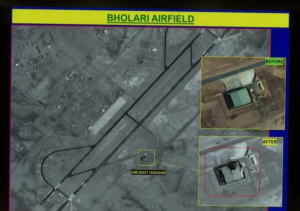
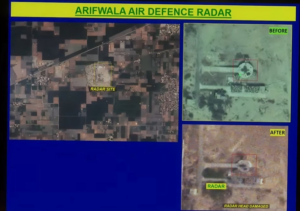
11. What did Jacobabad’s strike mean for the west?
Jacobabad lies close to Pakistan’s border with Balochistan and Afghanistan—a region where covert ops often simmer. On May 10, it was hit with loitering drones and long-range missiles. Military warehouses collapsed. Fuel trucks exploded. In one blow, Pakistan’s western supply coordination was crippled. The ripple effect? Slower response times, stretched logistics, and less room to maneuver. It wasn’t a punch—it was a pressure point crushed.


| Air Base | Location | Role & Importance |
|---|---|---|
| Nur Khan (Chaklala) | Near Islamabad | Air mobility HQ; adjacent to Pakistan’s Strategic Plans Division (nuclear command). Severely hit. |
| Rafiqui (Shorkot) | Punjab | Fighter base with 10,000-ft runway; vital to Pakistan’s central air defense grid. |
| Murid (Chakwal) | Punjab | Drone warfare hub (Bayraktar TB2, Akinci UAVs); near Indian border, crucial for UAV ops. |
| Sukkur | Sindh | Tactical base guarding southern Pakistan; important for logistics and defense. |
| Rahim Yar Khan | Punjab | Forward-operating drone base; rapid deployment point for UAVs and support units. |
| Pasrur | Punjab | Drone launch and surveillance site; located near the Line of Control (LoC). |
| Chunian | Punjab | UAV hub supporting fast-forward logistics; part of rapid drone deployment network. |
| Sargodha (Mushaf) | Punjab | PAF’s premier training base; houses elite F-16, Mirage, and JF-17 squadrons. |
| Arifwala | Punjab | Auxiliary drone base; supports mobile radar systems and remote surveillance. |
| Bholari | Sindh | New JF-17 base; reinforces Karachi and southern air defense corridor. |
| Jacobabad | Sindh | Forward base for deployment and logistics; covers southwestern front near Balochistan. |
Share this content:

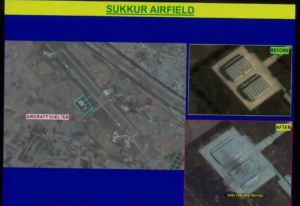













Post Comment